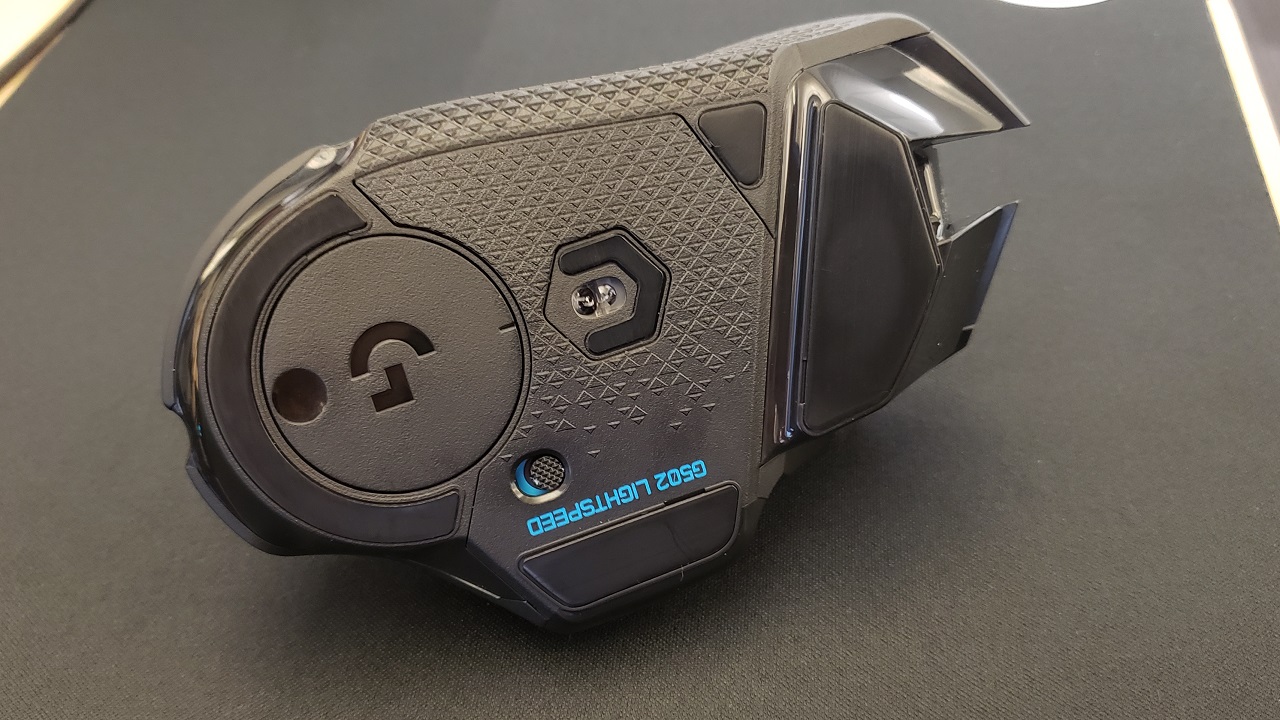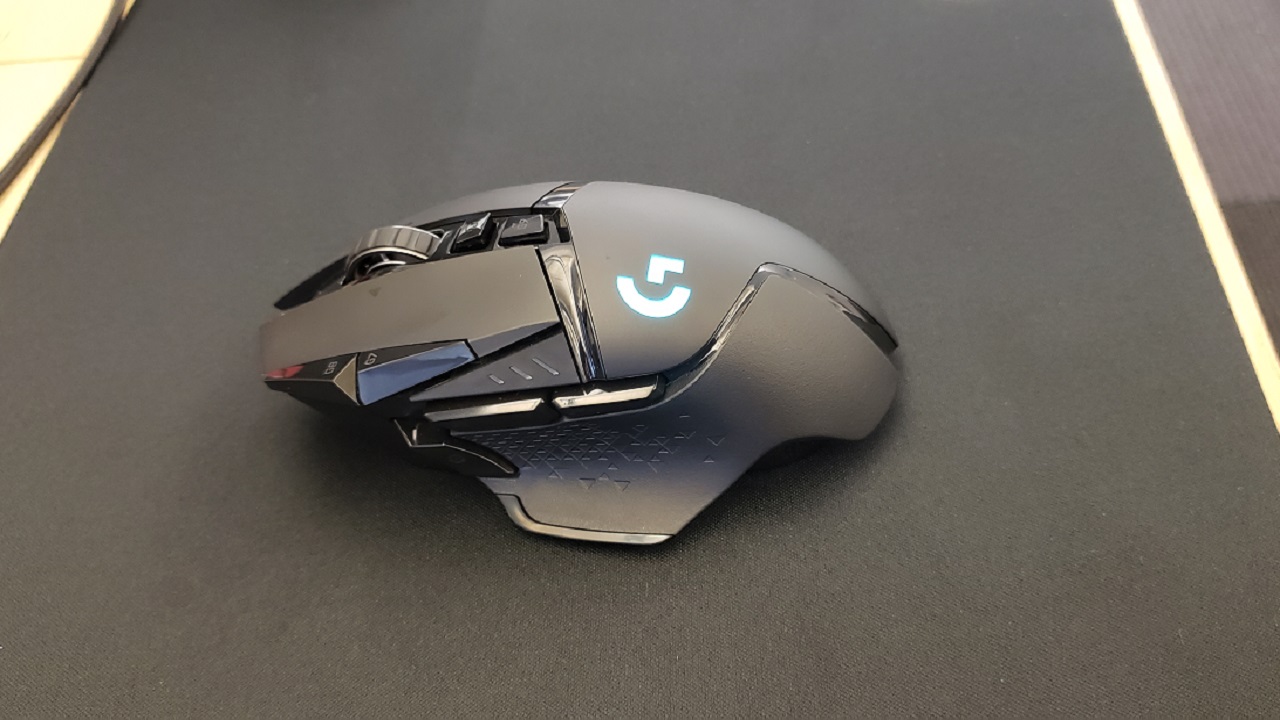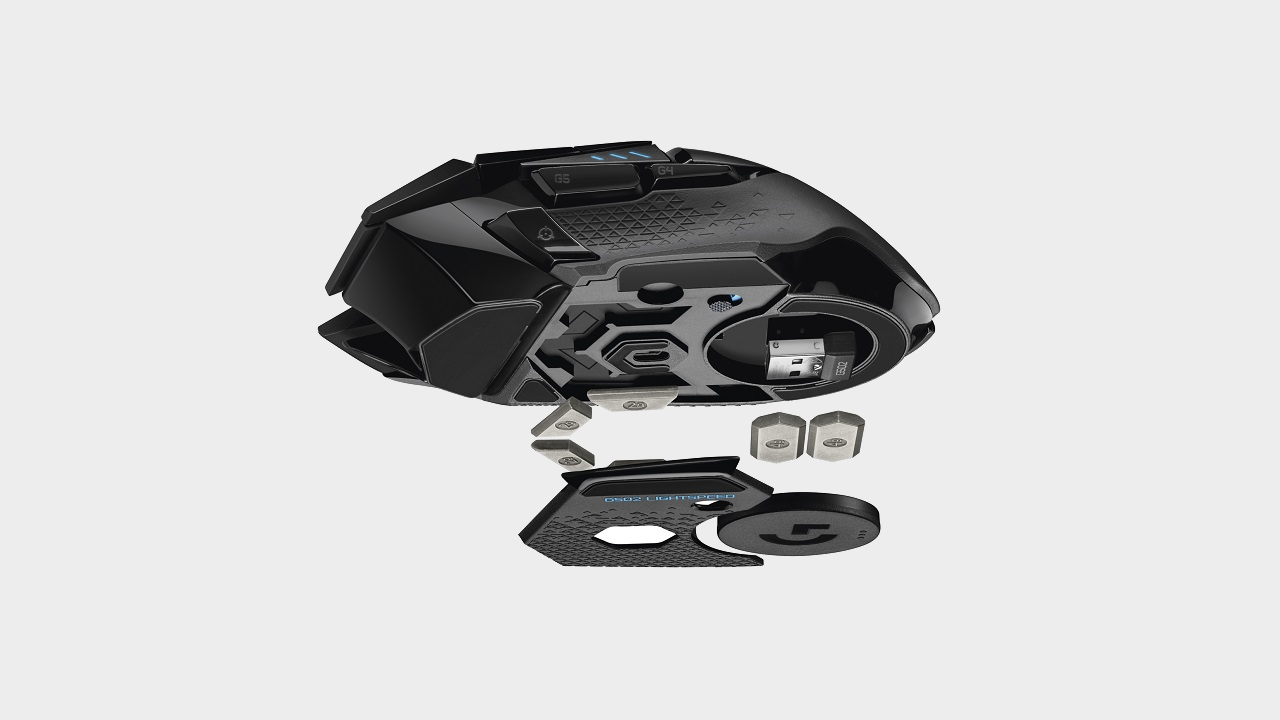GamesRadar+ Verdict
The long-awaited G502 Lightspeed wireless is an excellent mouse brimming with thoughtful features, hampered by a stinging price point.
Pros
- +
Top notch HERO sensor
- +
11 fully programmable buttons
- +
Modular weight
- +
Compatible with the Powerplay charging mat
Cons
- -
Very expensive at $149.99 (£129.99 in the UK)
- -
Built solely for righties
Why you can trust GamesRadar+
PC players have long been clamoring for a wireless version of the beloved G502 (especially one compatible with Logitech's charging mouse mat, the Powerplay), and Logitech has answered the call with its brand new Lightspeed refresh. And to its credit, the company didn't just snip off the cord and build in Powerplay functionality; this is a thoughtful redesign that adds a number of welcome new features and includes the latest iteration of the excellent HERO sensor. It's a fantastic model - and could make it one of the best gaming mouse options for 2019 - but that quality is reflected in the price tag.
Performance

That aforementioned HERO sensor is a 16,000 CPI beauty with a 400 IPS max speed rating, which means you'll be able to throw the G502 around with wild abandon and it won't lose tracking. The HERO eliminates smoothing of any kind to mitigate latency, while also minimizing jitter. It's an excellent optical sensor that performs as well as described in the marketing materials, and one of my favorite sensors of the massive pool I've tested. It's also incredibly efficient - Logitech claims that the current generation is 10x more power efficient that previous iterations. The mouse charges quickly, either on the sold-separately Powerplay mat or via a wired USB connection, and boasts up to 60 hours of battery life with the RGB turned off (or 48 hours with the lights on).
Another standout is how well (and consistently) the G502 performs on different surfaces. Lift off distance remains almost identical whether you're using a hard or soft mousing surface, and tracking is remarkably precise on both. The HERO's intelligent LED uses varying power and intensities of light to ensure that each frame is captured as accurately as possible, and the result is pixel perfect tracking. This is a mouse that does exactly what you want, when you want, the kind of latency free experience in a wireless pointer that you'd expect from a wired unit.
Design

Aesthetically the G502 adheres to the current universal playbook for gaming mice: matte black hard plastic and grippy rubber, sporadically relieved by splashes of RGB lighting. That said, I like its interpretation of that aesthetic, a blend of soft, long curves and sharp, hard angles, with lighting that's understated and well-placed (only the logo and CPI/battery life bars are lit). I also like the sweep of the foot protruding from the left panel, though the rest of the left side is a bit busy.
The 11-button layout is mostly very sensible - the thumb buttons are easy to reach and differentiated enough that you won't be hitting the wrong one by mistake. So too are the welcome CPI buttons up next to the left click. While it felt a bit odd having another pair of buttons stashed up there, in practice they're easy to reach when you need to adjust on the fly. The one issue is the 'sniper' button, that when held adjusts the mouse to 400 CPI so you can nail precise headshots in the thick of a firefight. While a sniper button is a welcome addition to a gaming mouse, I also found myself pushing it by accident when I was moving the mouse. A sudden drop in CPI isn't a huge deal, though it can get you killed in a tense situation, so I found myself wishing it was a little harder to actuate.
Features

The additional sniper button is only the tip of the iceberg of a broad pool of welcome features, though. There's also the option to add additional weights, in 2g and 4g sizes, to the bottom of the unit if you prefer a heavier pointer, letting you set its weight anywhere between 114 and 130 grams. And of course, there's the Powerplay functionality. If you pick up the $100 charging mat, you can power and charge the mouse on the fly, and even pair them so you don't need the USB dongle for your PC to recognize the mouse. It feels like a little taste of the future using a wireless mouse that never needs charging, though you do pay a premium for that luxury.
The G502 Lightspeed also packs a button to swap the scroll wheel from free spinning to clicking through steps, and that wheel is also home to a full three additional buttons - one when you push it down, and another pair when you flick it to the left or right. While this might sound odd or unstable, it doesn't affect the wheel's standard functionality at all, which is stable and solid. There's even a discrete button under the wheel lock that will flash the battery life so you can check it at a glance on the fly, particularly important if you haven't added the Powerplay mat to your arsenal.
Overall
The G502 Lightspeed, especially when paired with the charging mat, feels like a first step towards a beautiful, untethered future. It's a fantastic little capsule of fascinating tech, thoughtfully (even brilliantly at times) designed. Its one Achilles heel that bars it from sheer breathless adoration is that crippling price tag - at $150 (£130 in the UK), before the additional cost of the Powerplay mat, this is a mouse for the truly dedicated or very rich. But if you can afford it, it's an amazing mouse that truly reflects its history.
Alan Bradley was once a Hardware Writer for GamesRadar and PC Gamer, specialising in PC hardware. But, Alan is now a freelance journalist. He has bylines at Rolling Stone, Gamasutra, Variety, and more.




